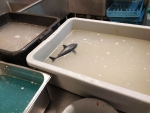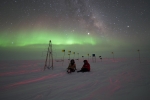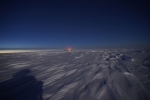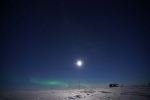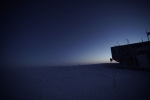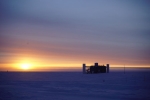Look what showed up in the dish pits lately. Hmmm. At least this shark infestation poses no real danger.
IceCube’s winterovers just sat down to take in the view after finishing up some outdoor IceAct snow accumulation measurements. It was a view worth sitting down for. But for a relatively quiet week at the Pole, they still found themselves with plenty to do.
It’s still not completely dark, but we know that eventually, and soon enough, the darkness will come to envelope everything.
The extreme environment of the South Pole poses numerous challenges for those who work there, especially during the winter. One difficulty is simply dealing with things that break. You can’t just order a replacement online.
It’s not the first aurora of the season, but it is the first one to be captured on camera by IceCube winterover Kathrin—a pretty, swirling aurora along the horizon, with a bright moon illuminating the icy surface from above.
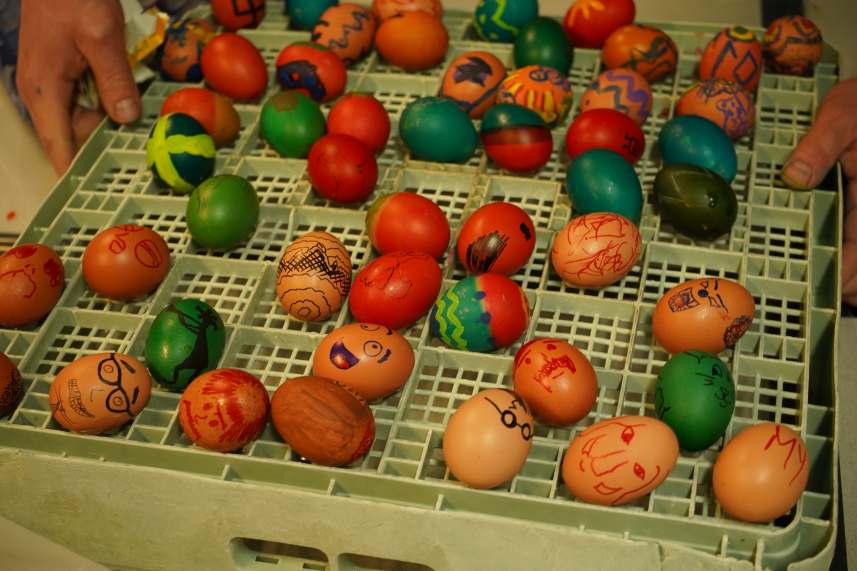
The sky was still bright enough last week to take a photo of an ozone balloon launch, the first one to send up a special plastic balloon in the hopes of a better survival as it ascends in the cold atmosphere.
There’s still just a bit of sunlight lingering, as seen in the image at top—what’s not so easily discernible in the image are the stars, but the winterovers report having seen them for the first time in months.
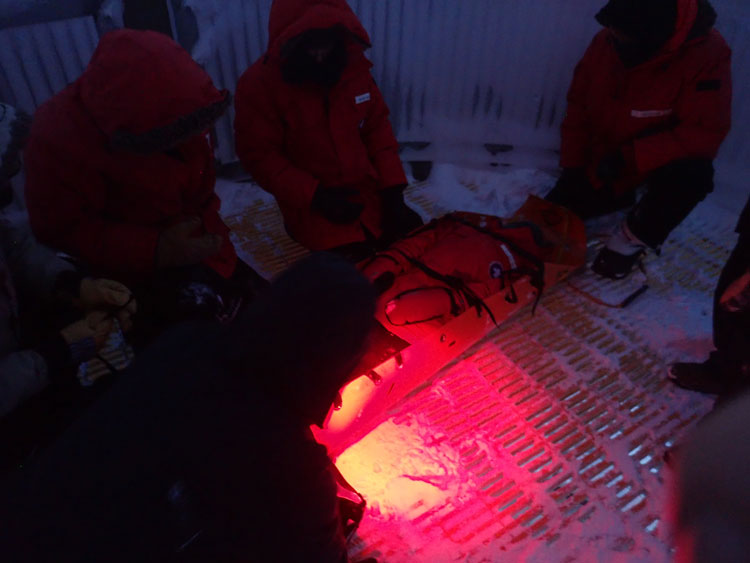
Although the sun has set and winter has begun, it takes a while before it actually gets dark at the South Pole. Twilight is a prolonged process there, lasting weeks. Here there’s still plenty of daylight to see the station as it starts to look nice and frosty without direct sunlight.
IceCube's winterovers had the good luck to enjoy clear weather last week. They were able to capture some dramatic photos of the sunset.
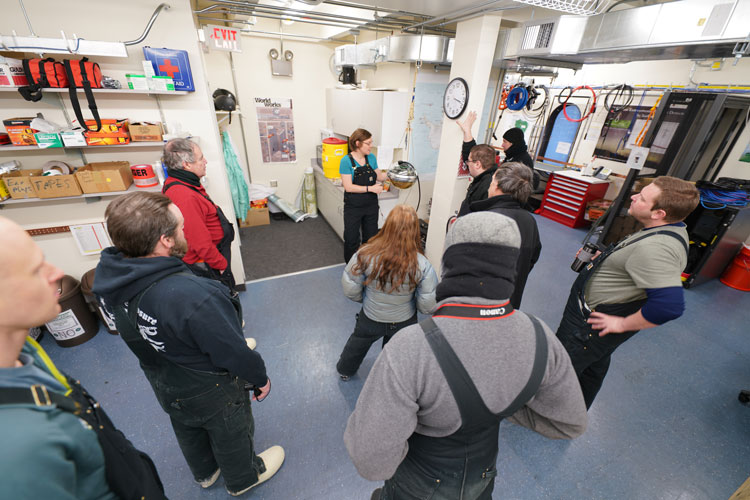
As the sun sinks low behind the IceCube Lab, the building’s shadow grows long—it’s almost reaching the South Pole Telescope, as shown here.

